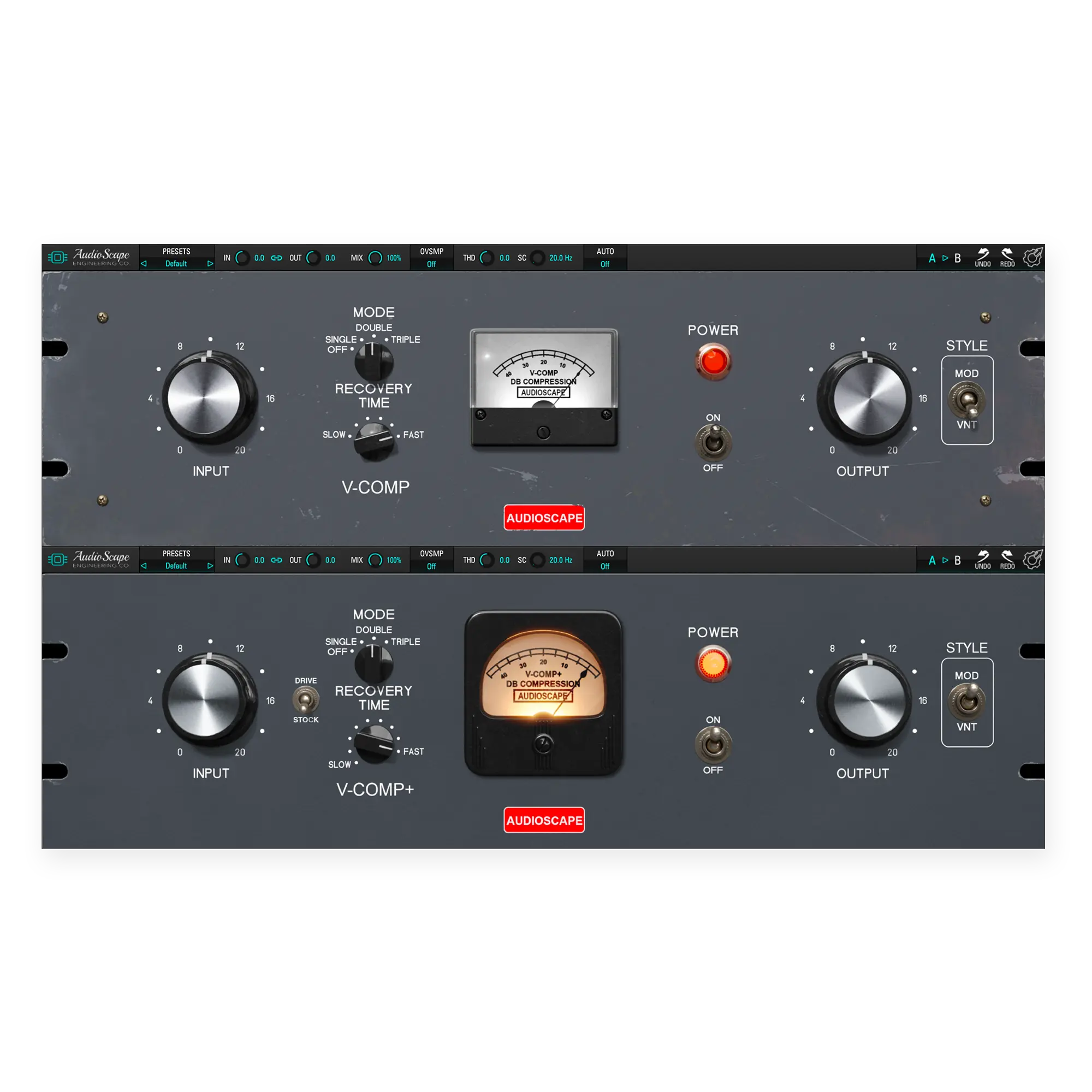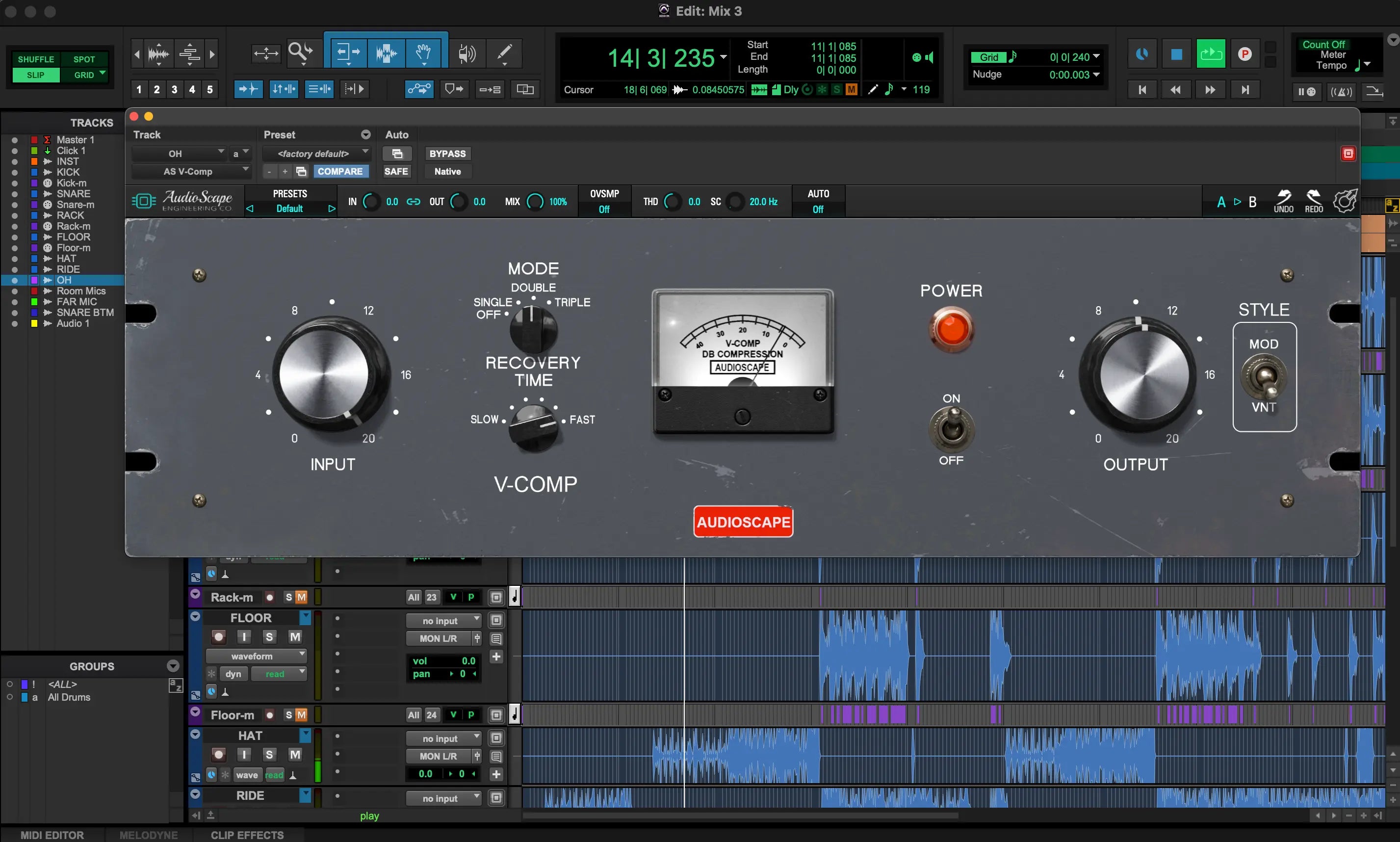Introduction
The Pultec EQ, developed in the 1950s by Pulse Techniques, is one of the most iconic and sought-after equalizers in the world of music production. Eugene Shenk and Ollie Summerland, the brains behind Pulse Techniques, designed a series of equalizers, with the EQP-1A being the most renowned. Its distinctive design combined both passive equalization circuits and tube amplification, giving it a unique tonal character.

(📸: Pulse Technologies)
At a time when most audio equipment was focused on sheer fidelity, the Pultec stood out for imparting a warm, musical coloration to signals. The EQ's broad curves and unique ability to simultaneously boost and cut frequencies at the same point (often referred to as the "Pultec trick") became hallmarks of its design.
In the realm of music production, the Pultec EQ has etched a name for itself as one of the magic "secret sauces" behind countless classic records. From soulful vocals to punchy kick drums, producers and engineers have employed the Pultec to shape and enhance sounds, lending them an unmistakable character. Its musicality and warmth have often been credited for turning good mixes into great ones.
As recording shifted from analog to digital, the unique qualities of the Pultec were emulated by countless software companies, ensuring that its legacy continues to influence modern productions. Today, whether in its original form or in one of its digital reincarnations, the Pultec remains a testament to the enduring power of well-designed audio equipment in the creation of timeless music.
Understanding the Pultec EQ: A Scientific Explanation
At its core, the Pultec EQ operates using passive equalization circuits, which means it shapes the frequency response without the need for active amplification in the EQ stage itself. This results in very low noise and distortion. The equalization circuits use a combination of capacitors, coils, and resistors to create resonant curves that can boost or cut specific frequency bands.

(📸: Sound On Sound)
What sets the Pultec apart is its ability to both boost and cut at the same frequency, a technique often dubbed the "Pultec trick". This seemingly paradoxical approach can be thought of as creating a resonant peak while carving out a space around it, resulting in a sculpted sound that retains its musicality.
The sonic impact of the Pultec's unique circuitry is further amplified by its tube-based makeup gain stage. Tubes are renowned for introducing harmonically rich distortions that, when controlled, can add warmth and character to the audio signal. In the case of the Pultec, this tube amplification stage not only compensates for any loss in signal level due to the passive EQ stage but also adds a subtle saturation and coloration that enhances the overall sound. This harmonious blend of passive equalization and tube warmth gives the Pultec its unmistakable tonal character, transforming sterile signals into sonically pleasing and vibrant outputs.
Pultec EQ Parameters: A Guide
Navigating the controls of the Pultec EQ might seem daunting at first, but understanding its distinct parameters and their influence on sound is the key to harnessing its legendary tonal magic. Let's delve into the primary controls: Boost, Bandwidth, and Attenuate, and learn how each one shapes the audio signal.
- Boost: This control allows you to elevate specific frequency bands, adding emphasis where needed. Whether you're aiming to bring out the sizzle in a hi-hat or the warmth in a vocal, the boost function serves to spotlight chosen frequencies. As you increase the level of boost, the designated frequency becomes more pronounced, imbuing the sound with character and presence.

- Bandwidth: Often referred to as "Q" in other equalizers, bandwidth in the Pultec EQ determines the range of frequencies affected around the selected center frequency. A narrow bandwidth targets a very specific set of frequencies, making surgical changes, while a broader bandwidth influences a wider range, resulting in smoother, more gentle tonal shifts. This control is crucial for determining how subtly or aggressively the EQ impacts the sound.

- Attenuate/Cut: In contrast to the Boost function, the Attenuate control diminishes specific frequencies, reducing their prominence in the mix. It's perfect for taming harshness in a sound or creating space in a mix by carving out unwanted frequencies. The unique charm of the Pultec lies in its ability to boost and attenuate the same frequency simultaneously. This results in a resonant boost with a surrounding cut, sculpting the sound in a way that's both pronounced yet smooth.

- Boost/Cut Frequency Selectors: You can change where the boosts and cuts are happening. Depending on which model you’re using will depend on which frequencies you have access to. For the low end options on the original unit, you can switch between 20Hz, 30Hz, 60Hz, & 100Hz. For the high end you could select a boost of 3K, 4K, 5K, 8K, 10K, 12K, & 16K and attenuate at 5K, 10K, or 20K.

By mastering the interplay between these controls, you can craft sounds that are both vibrant and refined, making it evident why the Pultec continues to be a revered tool in the world of audio production.
Using a Pultec Style EQ: Tips and Tricks
The mystique of the Pultec EQ lies not just in its iconic design but also in the myriad of ways it can be used to shape and color sound. Whether you're wielding an original hardware unit or one of the many software emulations, here are some best practices and pitfalls to keep in mind when using a Pultec-style EQ:
Best Practices for Musical Enhancement:
- Start Subtle: The Pultec's broad curves can introduce significant changes even with minimal adjustments. Start with gentle boosts or cuts and listen to how the sound evolves.
- The Pultec Trick: Experiment with boosting and attenuating the same frequency. This can create a resonant peak while reducing surrounding frequencies, offering clarity and punch without making the sound overly sharp.
- Mid-Side Processing: Some modern emulations of the Pultec EQ offer mid-side processing. Use this to, for instance, boost the sides for a wider stereo image while keeping the center frequencies controlled.
- Use as a Tone Shaper: Instead of trying to fix problematic frequencies, use the Pultec to shape the tone. Enhance the warmth of vocals, or add sparkle to overheads by focusing on the frequency bands that bring out the character of the source.

(📸: Vintage King Audio)
Potential Pitfalls to Avoid:
- Overprocessing: It's easy to get carried away, especially when the EQ is adding such pleasant coloration. Constantly bypass the EQ to ensure you're enhancing, not over-coloring, the original sound.
- Phase Issues: Especially with broad boosts and cuts, be wary of potential phase issues that might arise, particularly when used on stereo sources or in a mix bus. Periodically check your mix in mono to ensure coherency.
- Ignoring Input and Output Levels: Some emulations, and the original hardware, can introduce pleasant saturation when driven hard. However, pushing too much can lead to undesirable distortion. Always keep an eye (and ear) on your input and output levels.
- Over-reliance: The Pultec is a fantastic tool, but it's one of many in your arsenal. Don't try to solve every mix challenge with it. Sometimes, another EQ or tool might be better suited for the job.
Check Out Our Free Tube Style EQ
For those eager to immerse themselves in the iconic sound and character of the Pultec EQ without breaking the bank, Kiive Audio offers a free Pultec-style plugin for all the enthusiasts out there. Whether you're just starting your journey in audio production or are a seasoned professional, our plugin ensures a genuine Pultec experience right at your fingertips. Dive into the world of smooth curves and warm tones without any financial commitment. Simply click here and start using it today!

Conclusion
The Pultec EQ stands as a beacon of musicality and innovation in the world of audio production. Its distinctive design and unparalleled tonal character have left an indelible mark on countless classic records. As we've explored its history, technical workings, and usage tips, it's clear why this legendary EQ continues to inspire and shape sounds across generations!









Leave a comment
All comments are moderated before being published.
This site is protected by hCaptcha and the hCaptcha Privacy Policy and Terms of Service apply.